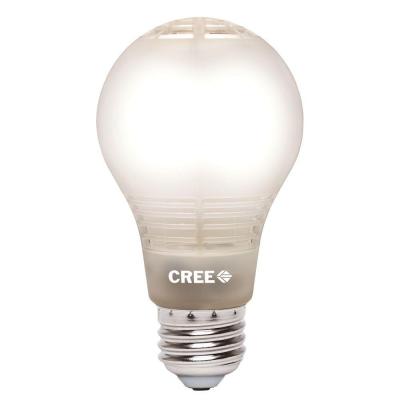 Not much visible from the exterior has been happening on our house lately. So I haven’t been blogging. But Brenda suggested I talk about some of the aspects of our new home like LED lights, energy-efficient appliances, sustainable materials.
Not much visible from the exterior has been happening on our house lately. So I haven’t been blogging. But Brenda suggested I talk about some of the aspects of our new home like LED lights, energy-efficient appliances, sustainable materials.
I married a smart woman.
To start, we are going to use LED lights in our house. Everywhere. No incandescent “heaters”. In the picture with this post is the new CREE bulb that just came out.
It weighs just 2 ounces. It uses just 11 watts of energy and is the equivalent to a 60 watt incandescent bulb. Cost is $8. It should last virtually forever (expected life is just over 22 years). It has a color rendering of 2700K (what we would call a “soft white” or “warm white”). It puts out 815 lumens.
And those last two notes are where I want to focus my discussion about LEDs. There are a lot of LED bulbs out there and probably the two most misunderstood, overlooked and disappointing aspects are the color and the lumens.
A typical incandescent “soft white” or “warm white” bulb is about 2700K. The “K” stands for Kelvin. White light really has a range of reds and blues. If you ever notice some of the really really white LEDs, they are probably closer to 5000K (lots of blue hue), which is supposed to simulate natural daylight, although I’ve never thought natural daylight was that harsh. What most of us seem to like in our homes is a warmer, more “comfortable” color of white nearer the 2700K to 2800K range with more of the red hues. So when you go to buy an LED bulb, check the color temperature and look for the K value.
The other aspect is lumens. Lumens are not as readily advertised with LEDs, but are just as important a factor as the hue. A lumen is “the SI unit of luminous flux, equal to the amount of light emitted per second in a unit solid angle of one steradian from a uniform source of one candela.” Like that’s helpful to anyone but physicists. Bottom line is it’s a measured unit of light output. It’s helpful because some LEDs are advertised as a “60 watt equivalent” but may only put out 400 lumens (closer to a 40 watt equivalent). A typical 60 watt incandescent bulb will put out about 650-800 lumens.
Some advice, then, as you look to purchase LEDs: check color and lumens. If you’re wanting to keep the incandescent “feel”, make sure the color is between 2700K to 3000K (which closer to a halogen color). Then make sure you’re getting adequate lumens. A 40 watt incandescent will put out 400-450 lumens, a 60 watt 650-800 lumens, a 75 watt 1,000-1,100 lumens, and a 100 watt about 1,400-1,600 lumens. Since most of us are familiar with the “feel” of incandescent, this is a good measuring tool as our conversion to LEDs happens.
In our Lawrence Street House, we will be using quite a few of these new CREE bulbs. We’ll also be using a fairly new Juno brand 2″ recessed spot. It is a 10 watt LED that puts out 650 lumens at 2700K. We also have some halogen replacements coming that put out 400 lumens using just 5 watts. We’re excited about the lighting and the energy savings we’ll see by using all LEDs.
